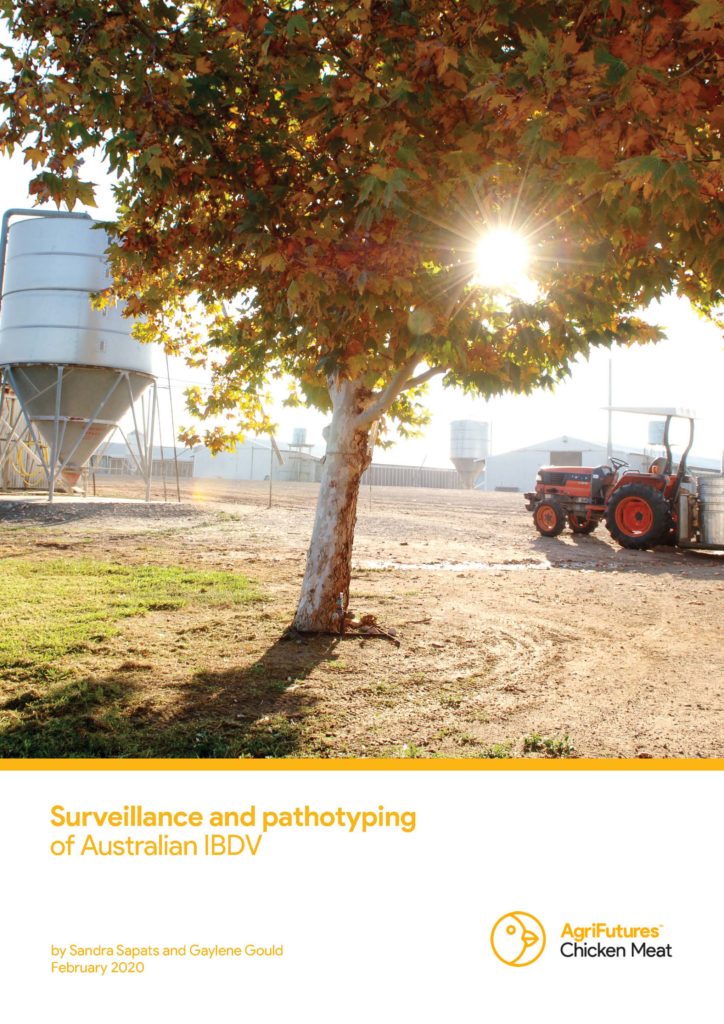Final Report Summary: Surveillance and pathotyping in Australian IBDV
Although both classical and variant strains of IBDV exist in Australia, they are genetically unique compared to IBDV strains isolated in other countries. For many years,...
 CHICKEN MEAT
CHICKEN MEAT 
83 pages
Published: 14 Feb 2020
Author(s): Sandra Sapatas, Gaylene Gould
ISBN: 978-1-76053-072-3
Download report PDF
DownloadPurchase a hard copy - AUD $55
The accidental incursion of very virulent IBDV (vvIBDV) strains into Australia could have devastating economic consequences for the Australian poultry industry, particularly if these viruses were to spread and become endemic. Hence, early detection and eradication of exotic IBDV strains in Australia is essential in reducing the potential economic impact of this disease. The early detection of endemic strains with increased pathogenicity is equally important. Hence, this report describes the genetic and antigenic characteristics of IBDV strains isolated from commercial chicken flocks in Australia between 2014 and 2018, as well as pathotyping of selected field isolates displaying novel genetic changes or associated with poor flock performance. The report also describes the development of a multiplex assay for IBDV using Luminex xTAG technology that enables the simultaneous detection of up to 100 different nucleic acid targets within a single reaction. Overall, the results confirm that Australia remains free of exotic IBDV strains, however the results suggest that there has been significantly greater movement of IBDV strains across state borders over the last three years than previously detected. Exactly how these IBDV strains are spreading in Australia in uncertain, but the data indicate that current biosecurity measures may be inadequate.
This report provides important information to the Australian poultry industry about the types of IBDV strains currently circulating in Australia and their potential to produce disease in commercial chicken flocks. The results also provide industry and other government bodies with evidence to substantiate Australia’s claims as being free of exotic IBDV strains, particularly vvIBDV.